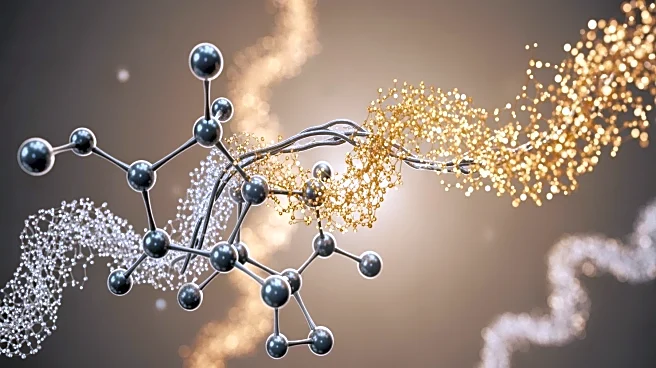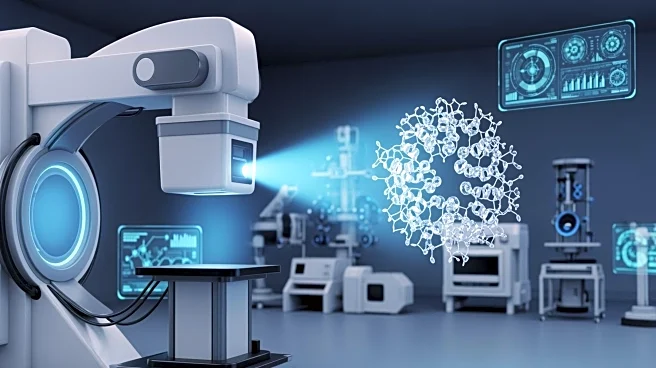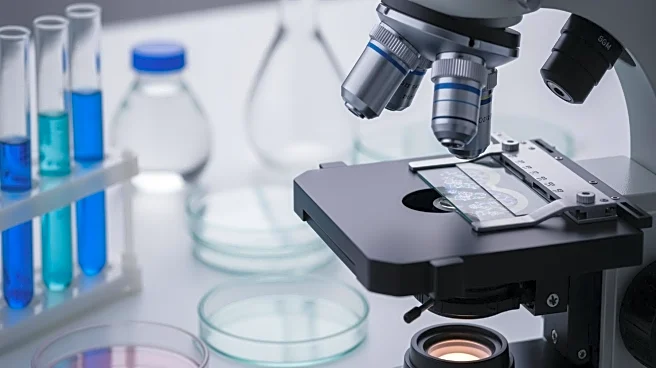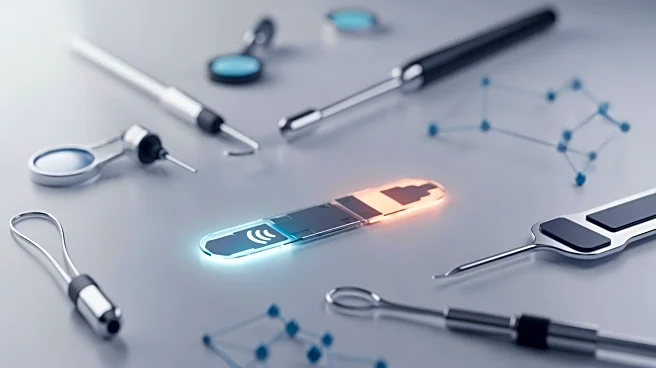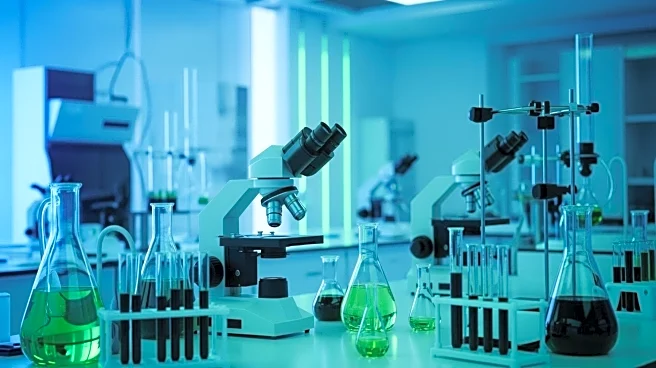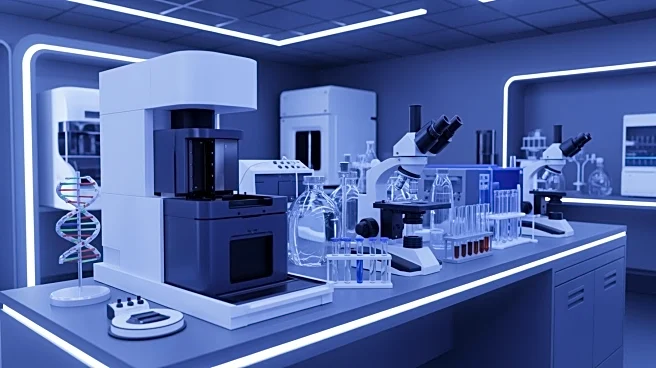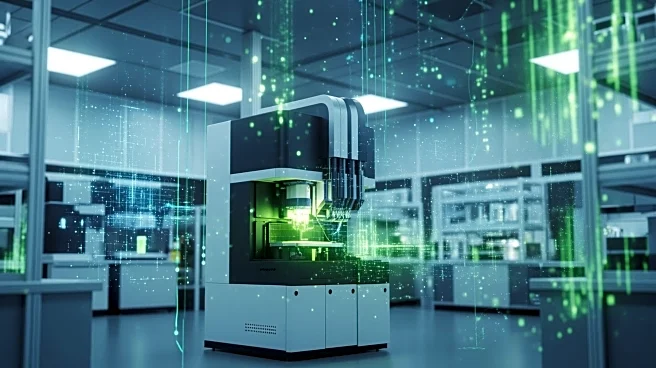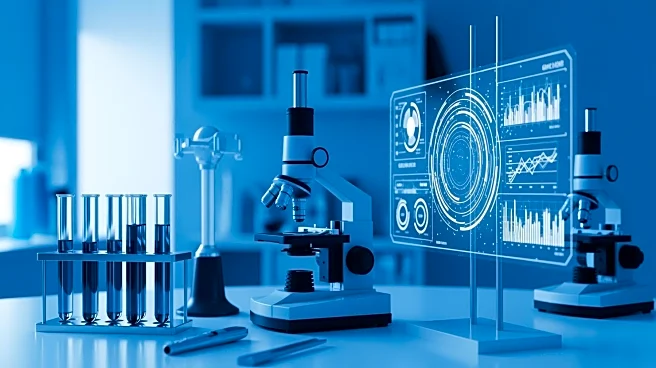What's Happening?
The FEOX biosensor, a genetically encoded tool, has been developed to monitor cellular iron environment dynamics at a single-cell resolution. This biosensor is based on a mammalian hemerythrin-like domain
and is designed to provide insights into cellular iron homeostasis. The FEOX sensor operates by integrating into the genome of mouse embryonic stem cells, allowing researchers to observe changes in fluorescence in response to varying iron conditions. This tool has demonstrated its ability to detect iron deficiency and monitor iron dynamics during early embryonic stem cell differentiation.
Why It's Important?
The development of the FEOX biosensor is a significant advancement in the field of cellular biology, particularly for understanding iron metabolism. Iron is a critical element in numerous biological processes, and its dysregulation can lead to various health issues, including anemia and neurodegenerative diseases. By providing a detailed view of iron dynamics at the cellular level, FEOX can aid in the study of these conditions and potentially lead to the development of new therapeutic strategies. This tool also enhances the ability to study cellular processes during development, offering insights into how iron availability affects cell differentiation and function.
What's Next?
Future research will likely focus on refining the FEOX biosensor for broader applications across different cell types and conditions. Researchers may also explore its use in human cells to better understand iron-related diseases. Additionally, integrating FEOX with other biosensors could provide a more comprehensive view of cellular environments, facilitating the study of complex biological systems.
Beyond the Headlines
The introduction of such advanced biosensors raises questions about the ethical use of genetic tools in research. Ensuring that these technologies are used responsibly and ethically will be crucial as they become more prevalent in scientific studies. Discussions around data privacy and the potential for genetic manipulation will be important as the field progresses.


